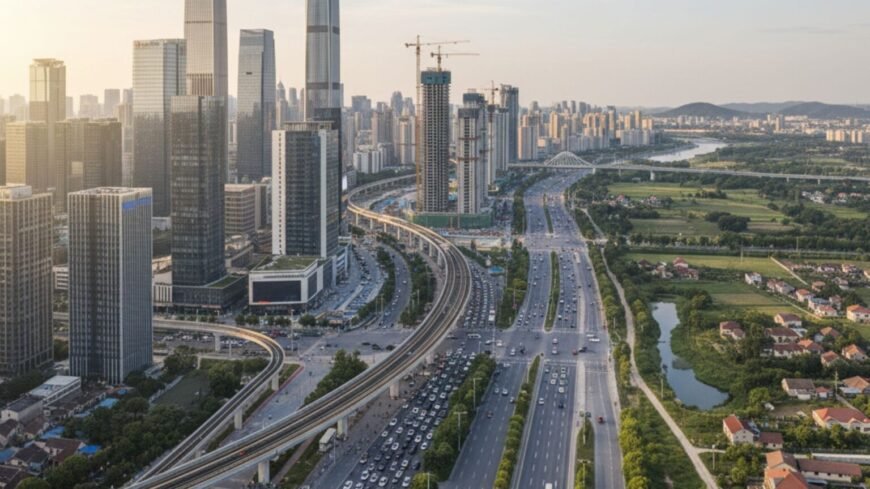Understanding Tier 1, Tier 2, and Tier 3 Cities in Real Estate Growth
Table of Contents
India’s real estate sector is one of the fastest-growing markets in the world, shaped by rapid urbanization, infrastructure upgrades, and evolving lifestyle aspirations. To navigate this dynamic landscape, cities are often classified into Tier 1, Tier 2, and Tier 3 categories—a framework that helps investors, developers, and homebuyers assess opportunities and risks effectively.
At Urvik Consulting, we believe this classification is more than just a demographic measure. It’s a strategic lens through which stakeholders can evaluate market maturity, growth potential, and long-term investment viability.
In this article, we break down the characteristics of each city tier, their role in India’s real estate growth story, and why this understanding is critical for making informed property decisions.
What Are City Tiers in Real Estate?
City tiers are indicators of urban development, economic strength, and real estate potential. They highlight differences in population density, infrastructure quality, employment opportunities, and lifestyle patterns.
- Tier 1 Cities → Established metros with highly mature real estate markets, premium property values, and strong economic ecosystems.
- Tier 2 Cities → Fast-developing hubs with expanding infrastructure, rising affordability, and growing investment potential.
- Tier 3 Cities → Smaller urban centers with lower costs, untapped opportunities, and significant long-term growth prospects.
For investors and developers, understanding these tiers ensures smarter strategies—balancing stability, affordability, and scalability.

Tier 1 Cities: The Powerhouses of Real Estate
Tier 1 cities—such as Mumbai, Delhi, Bengaluru, and Hyderabad—are the economic engines of India. They boast advanced infrastructure, diverse employment opportunities, and strong demand across both residential and commercial segments.
- For Homebuyers: Premium apartments, integrated townships, and lifestyle-centric communities.
- For Investors: Consistent returns, high liquidity, and long-term appreciation, albeit with steep entry costs.
- For Developers: Limited land availability drives vertical growth and innovative commercial spaces, including co-working hubs and premium office towers.
While Tier 1 markets are competitive and saturated, their economic resilience continues to attract large-scale investments.
Tier 2 Cities: The Growth Drivers
Tier 2 cities—such as Lucknow, Jaipur, Coimbatore, and Indore—are now recognized as the growth engines of Indian real estate. Positioned between the saturated metros and emerging towns, they offer a balance of affordability and modern infrastructure.
Key growth enablers include:
- Infrastructure upgrades: Metro networks, expressways, airports, and smart city projects.
- Affordability factor: Lower property prices compared to Tier 1, attracting middle-class buyers.
- Commercial demand: Expansion of IT parks, co-working spaces, and retail malls.
- Policy push: Government schemes and incentives accelerating urban development.
For investors, Tier 2 markets provide high potential for value appreciation over the next decade, with relatively lower risks compared to Tier 3 cities.
Tier 3 Cities: The Emerging Frontiers
Tier 3 cities—smaller towns with evolving infrastructure—are increasingly becoming the next frontier of real estate expansion.
- Affordability: Low land and housing costs make them attractive for first-time buyers and early-stage investors.
- Connectivity improvements: Highways, regional airports, and rail networks are slowly bridging the gap with larger cities.
- Sectoral drivers: Education, healthcare, and retail are spurring localized demand.
However, investors should note that Tier 3 markets come with higher risks—slower appreciation, lower liquidity, and dependence on long-term infrastructure growth. A patient investment outlook is essential here.
Why City Classifications Matter
Understanding the tier framework is crucial for all stakeholders:
- Homebuyers → Identify markets that balance affordability with quality of life.
- Investors → Diversify portfolios by combining Tier 1 stability with Tier 2 and Tier 3 growth opportunities.
- Developers → Align project pipelines with demand trends and regional market needs.
Comparing the Tiers at a Glance
| Parameter | Tier 1 | Tier 2 | Tier 3 |
|---|---|---|---|
| Market Maturity | Highly developed | Rapidly developing | Emerging, early-stage |
| Property Prices | High | Moderate | Low |
| Infrastructure | Advanced | Growing | Basic, improving |
| Investment Risk | Low | Moderate | High |
| Demand Drivers | Lifestyle, commerce | Affordability, quality of life | Affordability, untapped market |
Conclusion
India’s real estate landscape is not uniform—it’s a diverse ecosystem where each city tier offers unique opportunities and challenges.
- Tier 1 cities → Stability, liquidity, and premium lifestyle investments.
- Tier 2 cities → Balanced affordability, strong growth trajectory, and rising investor interest.
- Tier 3 cities → High potential for early movers, best suited for long-term strategies.
At Urvik Consulting, we help clients decode these dynamics with data-driven insights and strategic advisory. Whether you’re a developer exploring new markets, an investor building a diversified portfolio, or a homebuyer seeking the right balance of affordability and lifestyle, our expertise ensures you make decisions aligned with long-term goals.

